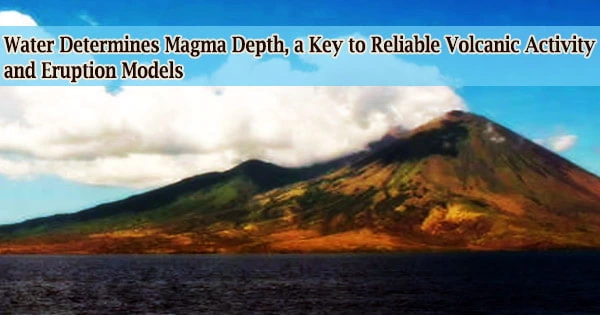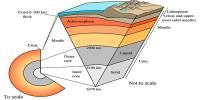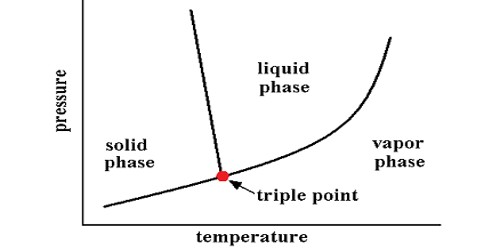There are currently between 40 and 50 active volcanoes in the world, putting hundreds of millions of people in danger from the dangers these volcanoes may pose.
Despite the serious risks that volcanic eruptions pose to human life and property, humanity is still unable to anticipate them reliably or effectively. Even when expert forecasts are right, there may not be enough time for people to evacuate or make emergency preparations.
Because volcanologists do not fully comprehend the natural dynamics and processes of the magma beneath a volcano before it makes its way to the surface, accurate and trustworthy predictions have remained a challenging goal.
Scientists may now be one step closer to correctly forecasting volcanic eruptions thanks to the findings of a recent study led by volcanologist Dan Rasmussen, a Peter Buck Fellow at the Smithsonian’s National Museum of Natural History.
The study, which was released today, March 10, 2022, in the journal Science, reveals that magma with higher water content tends to be stored deeper in the Earth’s crust for the most prevalent form of volcano in the globe. The discovery pinpoints what some scientists believe to be the primary variable influencing the depth at which magma is stored.
“This study connects the depth at which magma is stored to water, which is significant because water largely initiates and fuels eruptions,” Rasmussen said. In a manner similar to how carbon dioxide may cause a shaken Coke bottle to blow up, he explained that water causes eruptions.
“With water dissolved in magma that is stored beneath a volcano, if there is a sudden decrease in pressure, like when a shaken soda bottle cap is suddenly opened, gas bubbles form and those cause the magma to rise and jet out the volcano, similar to when a soda shoots out of a bottle top,” Rasmussen said. “More water content in magma means more gas bubbles and potentially a more violent eruption.”
“These results move us closer to understanding the physics and conditions of magma storage beneath volcanoes, and that is an essential ingredient for the kinds of detailed physics-based models necessary to more accurately forecast eruptions,” Rasmussen said.
The study was done using fresh fieldwork, laboratory analyses, and reanalysis of data already gathered from previously observed volcanic eruptions by the Smithsonian’s Global Volcanism Program.
Rasmussen started his research in 2015 while finishing his doctorate at Columbia University’s Lamont-Doherty Earth Observatory. Volcanologist Terry Plank, who served as his advisor, suggested he look into the still-unresolved issue of why and what controls the depth at which magma is stored in different volcanoes.
With water dissolved in magma that is stored beneath a volcano, if there is a sudden decrease in pressure, like when a shaken soda bottle cap is suddenly opened, gas bubbles form and those cause the magma to rise and jet out the volcano, similar to when a soda shoots out of a bottle top. More water content in magma means more gas bubbles and potentially a more violent eruption.
Volcanologist Dan Rasmussen
Rasmussen went into the field with a team that included geophysicist Diana Roman of the Carnegie Institution for Science to gather volcanic material from eight volcanoes situated in Alaska’s rough and inaccessible Aleutian Islands.
When choosing volcanoes for this study, the researchers concentrated on a specific geological setting: so-called arc volcanoes that are found near the meeting point of two convergent tectonic plates.
Since arc volcanoes, like those in the Aleutians, make up the entire famed “Ring of Fire” encircling the Pacific Plate, they are the most common form of volcano on Earth and the most obvious target for increasing predictive abilities.
The team used ships and helicopters to gather volcanic ash from these eight volcanoes despite choppy seas and the threat of enormous brown bears on the island of Unimak. The expedition’s main objective was volcanic ash since it can contain olivine green crystals with a diameter of around 1 millimeter, or about the thickness of a plastic ID card.
When these olivine crystals develop underground, they occasionally capture minute pieces of magma. These unique olivine crystals are brought to the surface of the Earth by an eruption, when the lava inside them cools and solidifies into glass.
The researchers were able to determine the lava’s water content by examining the chemical makeup of these tiny fragments of cooled magma from a volcano.
Six of the eight Aleutian volcanoes’ imprisoned magma samples were used to assess the water content, and the scientists then matched that information with estimates of the water content of 56 additional volcanoes from across the world that were gleaned from the scientific literature. The total number of samples with estimated magmatic water content, from 62 volcanoes, was 3,856.
The researchers combed the scientific literature and compiled an associated list of 331 depth estimations for 112 volcanoes in order to investigate the relationship between the estimated water content of these magma reservoirs and their individual storage depths.
Rasmussen said the Smithsonian’s Global Volcanism Program’s database “was key in compiling these lists because it’s a really good resource for eruption history, and we only wanted to consider volcanoes that had recently erupted.”
Rasmussen and the study team concentrated on recent eruptions since estimates of depth or water content based on recently erupted material have the best chance of accurately reflecting the current state of the volcano’s magma reservoir. Magma reservoirs do not seem to change much after an eruption.
The team was able to map the estimated magma storage depths for 28 volcanoes from across the world against their individual estimated magmatic water contents after years of fieldwork, geochemical research, and literature assessment.
The findings were startlingly obvious: the water content of a magma reservoir closely associated with its storage depth. In other words, magmas with higher water content were typically stored further below the crust of the Earth.
The study also demonstrates that a magma’s water concentration controls its depth rather than just correlates with it. By finding chemical tracers linked to the emergence of water-containing magmas in the Earth’s mantle, the researchers demonstrated this causal linkage.
“If storage depth determined water content in magma, it could still create the correlation between water content and depth that we observed, but it wouldn’t produce the chemical tracers of the magma’s initial water content that we found,” Rasmussen said.
Rasmussen and his co-authors contend that degassing, a process where water mixed with the magma creates gas bubbles is how water concentration may impact magma storage depth. The researchers hypothesize that the magma’s ascension slows and stalls as a result of its increased viscosity when it starts to degas while rising through the Earth’s crust.
The most widely held theory in the field today is that magma rises through cracks in the Earth’s crust because the molten rock is more buoyant than the surrounding crust, and settles at its storage depth because it reaches neutral buoyancy, where the magma is no more buoyant than its surroundings. The evidence that water content largely controls magma storage depth contradicts this theory.
The next stage in this research, according to Rasmussen, is to determine whether the same principles apply to volcanoes in different geologic contexts, such as hot-spot volcanoes like those in the Hawaiian Islands or rift volcanoes like those in East Africa.
Beyond this extension of the research, Rasmussen said an even larger question looms: “If magma water content controls magma storage depth, what controls magma water content?”
The Smithsonian Institution, the National Science Foundation, the Community Foundation for Southwest Washington, and the U.S. Geological Survey all contributed funding and support to this study.
















